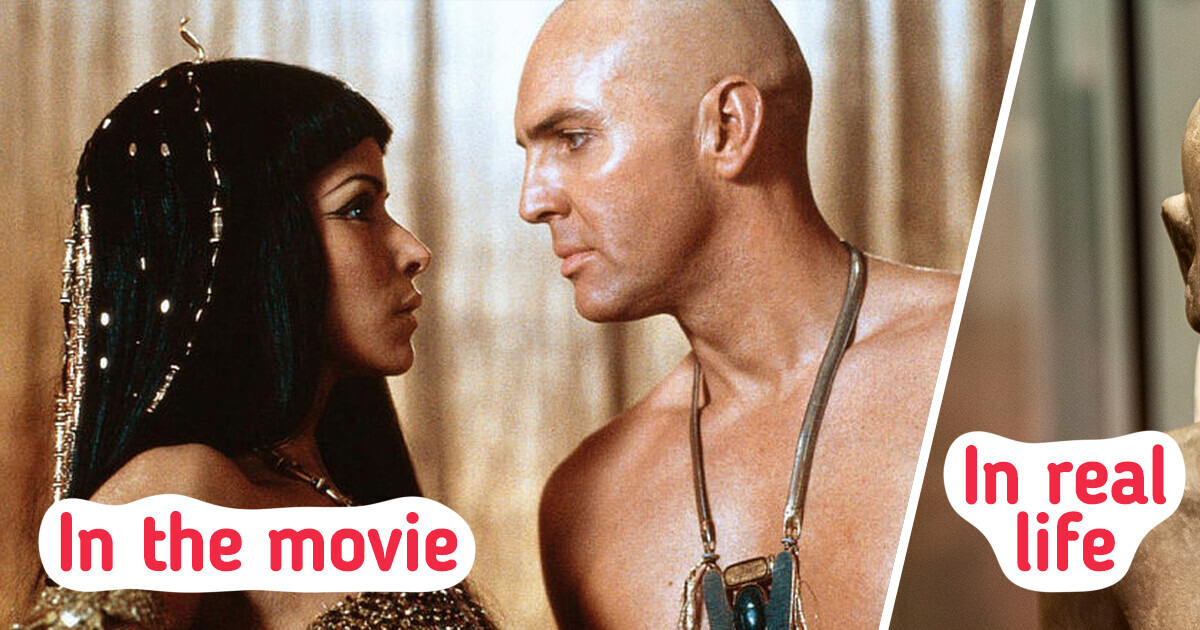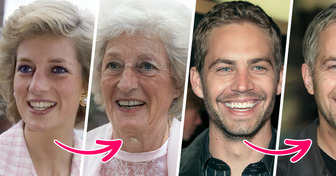Heidi Klum's Son Debuted on the Runway, and People Are All Talking About One Detail


In childhood, when reading history books, we tried to visualize what famous people of the past looked like. Modern cinema provides an excellent opportunity to bring images of famous people to life. But do they correspond to historical facts? We put together nine famous people of the past, who we used to visualize quite differently because of movies.
The story of Hugh Glass, portrayed by Leonardo DiCaprio in The Revenant, is so incredible that it’s hard to believe it was based on true events. Glass started his adventures in his 30s, living as a pirate off the Texas coast. After jumping ship with a companion, they swam 2 miles and walked over 1,000 miles toward St. Louis, only to be captured by the Pawnee. Glass won them over with gifts and became an honorary member.
While his story mirrors The Revenant, his actual bear injuries were even more gruesome than DiCaprio’s. In reality, Glass sought to recover his belongings, not avenge a slain son. When he finally found the two men who abandoned him, he spared them twice — once out of mercy and again because one had joined the Army, according to legend.
Joan of Arc is a national heroine and a patron saint of France. In a short time, she gained popularity and respect from the whole society. Thanks to this, she became a prominent symbol as the defender of the French nation.
In the movie, Joan of Arc is shown as a blonde girl with fair eyes, but according to various sources, the Maid of Orleans had black hair and dark eyes.
Julius Caesar was a great Roman general and statesman. He played a decisive role in the events that led to the fall of the Roman Republic and the rise of the Roman Empire.
In the well-known movie Asterix at the Olympic Games, Caesar was portrayed by the famous actor Alain Delon. But in reality, Caesar looked very differently. He had a high forehead, big nose and long face, and these features don’t correspond to the appearance of Alain Delon.
Henry VIII is usually known for having 6 wives and his legendary appetite. His reign — the break with Rome, the Reformation and the Dissolution of the Monasteries — had a great influence on England in shaping its independence. In the movie The Other Boleyn Girl, the king is dark-haired and of medium build, but in reality Henry had red hair and strong build.
The last ruler of the Ptolemaic Kingdom of Egypt is known for her beauty, but she stood out far beyond her external features. Cleopatra was a very wise and perceptive woman, which brought prosperity and peace to the weakened and divided country. She was famous not only for her political connections but also for her love affairs with Julius Caesar and Mark Antony.
Many films portray Cleopatra as a charming woman with perfect facial features, but the images on coins and busts show a slightly different image of her. According to various sources, she had an aquiline nose, which may not really fit modern standards of beauty. However, this didn’t prevent her from skillfully manipulating powerful people for her own ends.
Xerxes I was a Persian king and the fourth King of Kings of the Achaemenid Empire. He was the son of the great king Darius the Great. His main plans as his father’s successor included consolidating power in Egypt and Babylon, and subjugating Greece because he wanted to punish Athens and other poleis for strong resistance during Darius’ reign. In the movie 300, Xerxes is depicted as a bald man with numerous embellishments, but in reality, he had a thick beard and long hair.
Nefertiti was a queen of the 18th Dynasty of Ancient Egypt, the great royal wife of Pharaoh Akhenaten. She and her husband promoted the earliest known form of monotheism, Atenism, centered on the sun disc. With her husband, she reigned, witnessing and co-authoring perhaps the richest and most successful period in Egyptian history. She not only gave birth to 6 children, but also supported her husband in all his endeavors.
For many years, different actresses have tried to portray the great queen, but missed a very important detail: Nefertiti was not white-skinned, as some contemporaries believe. In addition, it is likely that there could be thick and curly hair under her headdress, which is very typical for this region.
Napoleon Bonaparte was the first Emperor of France. He was often described as a man of short stature, with a high forehead and deep-set eyes. Interestingly, the movie tells the story of the great commander’s career, which he began at the age of 24, but he is played by an actor who is well into his thirties.
The 1999 film The Mummy and its various sequels and spinoffs are inspired by actual Egyptian history. The real Imhotep served as a vizier, architect, and astrologer under King Djoser, who ruled from 2630 to 2611 BC. Imhotep is credited with designing the world’s oldest known hewn-stone monument, a pyramid in Saqqarah. Known in inscriptions as the chief of seers and sculptors, he also earned a reputation as a highly skilled physician. His expertise in medicine led to his deification as a god of healing, a status he maintained for centuries in both Egypt and Greece.
Meanwhile, Anck-su-namun was an Egyptian princess, not a concubine. Her true name was Ankhesenamun, and she was the daughter of Pharaoh Akhenaten and Queen Nefertiti. She later married Pharaoh Tutankhamun. Unlike the character of Anck-su-namun in The Mummy, she lived in the mid-1300s BCE, while Imhotep’s life spanned the 27th century BCE. As a result, although Ankhesenamun was a real historical figure, she could not have met Imhotep, much less fallen in love with him.
Be sure to check out our other article, where we explore what people known only through portraits actually looked like in real life.











